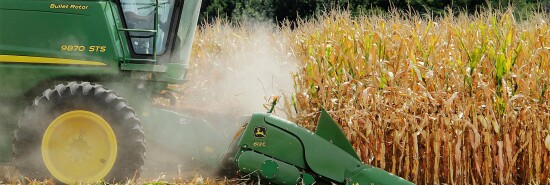
‘There’s so much corn!’
Timothy P. Carney
IMOGENE, Iowa — My daughter and I flew into Omaha for a trip that would include a college visit for her and a speech by me, but first, we made it to SportsPlex in Shenandoah, Iowa, for the parish picnic of St. Patrick, the Catholic Church in nearby Imogene.
Amid the burgers, hot dogs, overabundant homemade desserts, go-carts, mini-golf, batting cages, and bounce houses was an incredibly friendly crowd from around Fremont and Page counties here in southwest Iowa.
IDALIA PATH TRACKER WATCH LIVE: WHERE IS THE HURRICANE AND WHERE WILL IT MAKE LANDFALL
When one local named Dan asked my daughter for her first impressions of her first visit to the Midwest, my daughter replied, “There’s so much corn!”
Dan pointed out to the seas of corn surrounding SportsPlex and said, “Yep. Have a good look at your country.”
If you hit a home run at Imogene’s softball field, it lands in Jerry Laughlin’s corn. As I lapped my daughter in go-carts on Saturday, we were driving right next to a cornfield.
As a matter of geography, it’s not wrong to say that America is largely corn fields. About 90 million acres of corn are harvested in the average year, according to the Department of Agriculture. The lower 48 states comprise about 1.9 billion acres of land (so we’re not counting lakes here). That means that about 4.7% of the land in the continental United States is currently covered in corn. Only about 2% of the U.S. land is urban area.
So, us city folk and foreign visitors might think of Manhattan, Los Angeles, or Las Vegas when they think of the United States, but if you landed in a random place in the U.S., you’d be much more likely to land in a corn field than on a city street.
All this land yields an astounding 13 billion bushels of corn every year, more than 40 bushels of corn per American. A bushel of corn is 8 gallons and about 56 pounds of just corn kernels (no husks or cobs), so that’s one ton of corn.
If we distributed all the harvested corn to each American, a family of four would get three 8-gallon buckets of corn (for comparison, a Home Depot bucket is 5 gallons) per week. Basically, we could each consume a gallon of corn every day except for Monday.
But of course, most U.S. corn production is not consumed by humans. Human consumption, which incudes corn on the cob, corn starch for cooking, Fritos, corn tortillas, popcorn, high-fructose corn syrup in your soda, and plenty more, accounts for about 10% of all corn harvested in the U.S.
Instead, the single biggest use of corn is driving. Yup, almost 45% of all corn use in the U.S. is for ethanol, which is a fuel made from refining corn into grain alcohol. The federal government, heavily influenced by the corn lobby, forces refiners to add ethanol, which is less powerful than gasoline, and which ruins small motors, to gasoline.
About the same 45% gets used for cattle feed and other “residual use,” as the USDA categorizes it.
(The U.S. also exports a ton of our corn: about 2 billion bushels a year, mostly to China and Mexico, followed by Canada and Japan.)
All of these corn uses have their detractors. Ethanol is less efficient than gasoline, and because it evaporates, it contributes to smog. Corn-fed cattle are inferior to grass-fed cattle, beef aficionados will tell you. And corn syrup isn’t good for us. Some people argue it’s worse than sugar.
CLICK HERE TO READ MORE FROM THE WASHINGTON EXAMINER
Corn subsidies count for an estimated $2.2 billion a year, easily the largest single item on the farm bill. That means that our massive corn production is not driven by market demand but by government policy.
So, America is covered in corn, and a lot of folks will tell you that’s not good. Whatever you think of corn, it’s America.
